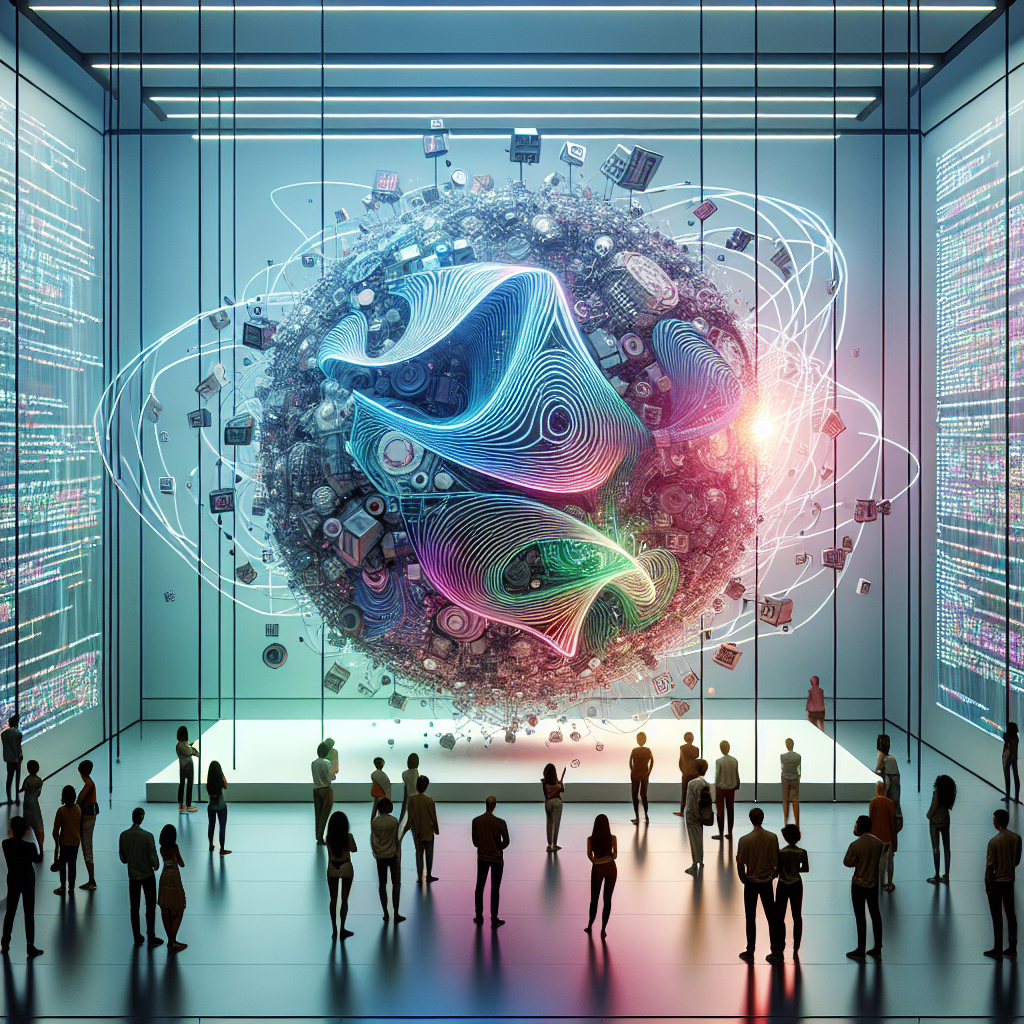The Future of Art: Embracing Technological Art in the Tech-AI Era
As the tendrils of technology continue to weave through every facet of our lives, the sphere of art has been touched by a transformative force—heralding a new epoch dignified as the era of Technological Art. The interplay of software, machines, and artistic vision is recalibrating the landscape of creation and consumption, thrusting us into introspective discourse on the evolution of aesthetics and meaning in the tech-AI-centric world.
At the fore of this revolution stands the synthesis of artificial intelligence with traditional artistic practices, an amalgamation which has precipitated both enthusiasm and trepidation within the artistic community. Technological Art is not merely an adjunct to its traditional counterpart; it is an expansion, a redefinition of boundaries that have long confined creativity to the organic limbs of human capability. Tech-AI advancements enable artists to craft experiences and express emotions with a fresh palette of digital tools, creating works that resonate in the digital heartbeat of our times.
Nevertheless, this forward march is fraught with philosophical debates that place humanity at the center of the art narrative. The assertions that art birthed from AI and technological apparatus may lack the intrinsic essence of human touch, that soulful quality imbued only through firsthand experience and emotional synthesis, challenge proponents of Technological Art. However, these views often fail to recognize the collaborative nature of such art forms, where the human mind orchestrates the mechanical process, encoding each stroke, sound, and pixel with intention and sentiment, albeit through silicon intermediaries.
Moreover, the democratization of artistry facilitated by technology is undeniable. AI algorithms that can analyze and simulate styles give rise to a new class of creatives with limited traditional proficiency but boundless imagination, thereby reshaping the demographic topography of the art world. User-friendly digital platforms are lowering the barriers to entry, allowing for a more diverse range of voices to be heard, a richness of perspectives previously muted by physical and educational constraints.
The potential of Technological Art in enhancing interactive and immersive experiences is vast. Augmented reality (AR) and virtual reality (VR) are not simply buzzwords—they are tools that elevate the observer into a participant, thereby redefining the relationship between the viewer and the artwork. The tangible distance that once was is now replaced by a curated symbiosis of viewer and viewed, opening up realms wherein art can be not only seen but felt, traversed, and experienced in multitudes of dimensionality.
Nonetheless, the rapid pace of tech-AI progress necessitates a vigilant ethical compass. Issues surrounding data privacy, intellectual property, and the value of human craftsmanship must be navigated with foresight and sensitivity. Art, at its core, is human expression, and while technology can amplify this message, it must not override the authorship and authenticity that come with human creation.
Looking ahead, Technological Art promises not an endpoint, but an ever-expanding continuum of possibilities. The future of art lies in a synergistic relationship with technology, where the exploration of new domains prompts artists to not just master new tools but to thoughtfully integrate them into the human narrative. The dialogue between artist and machine will evolve, and from it, so too will the narratives we tell ourselves about what art is and what it has the potential to be.
In conclusion, the future of art within the realms of Tech, AI, and Art is a dynamic interplay of legacy and innovation. Technological Art not only redefines the mediums through which expression finds life but also challenges our collective understanding of creativity and authorship. As artists and consumers in this brave new world, our role is twofold: to engage with technology as a collaborator in the creative process and to critically reflect on the implications of these new expressions of human thought and feeling. In the balance between embracing new tools and preserving the ethos of artistry lies the future—a canvas vast and complex, awaiting the brushstrokes of the next era of visionary creators.
Created by Lara Fox

